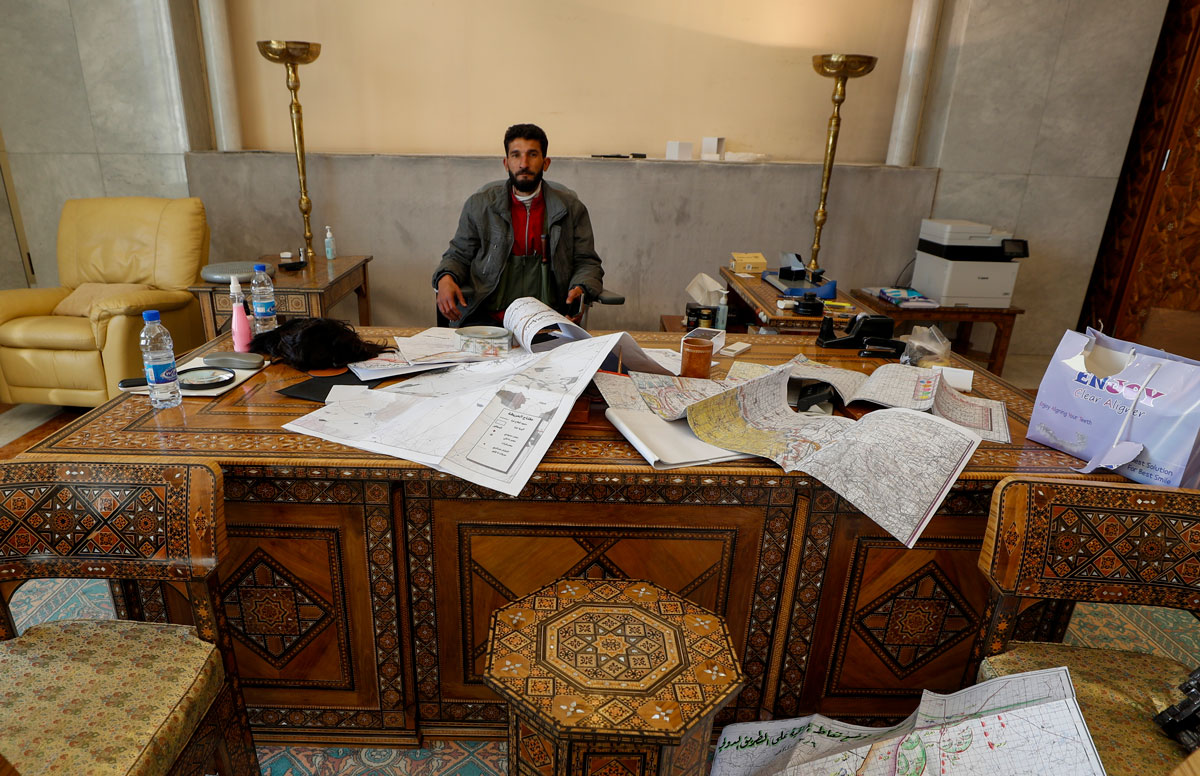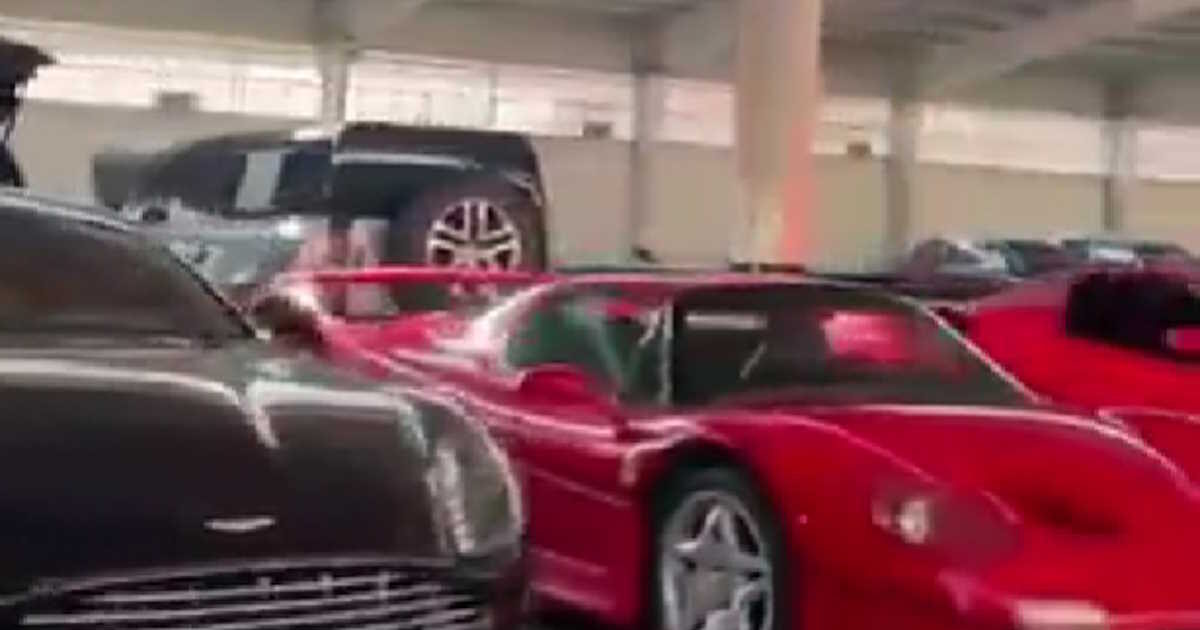The forces of Islamist rebels who entered his palace Bashar al-Assad they found a huge fleet of expensive cars. Danes with countless dishes and household items, towels, linen sheets, expensive bags of well-known brands in the private rooms of the overthrown dictator Syria.
Bashar al-Assad’s private car collection has gained attention on social media as rebels who entered the Syrian capital, Damascus, opened the gates of his palace.
Mercedes, Porsche, Audi and Ferrari, Aston Martin and Rolls-Royce are some of the most expensive supercars in Assad’s garage.
Hundreds of cars from convertibles to sports cars seen in one video show the stark contrast between his lavish lifestyle and the dire economic conditions facing many Syrians.
Dozens of Syrians stormed the Syrian president’s residence on Sunday (08.12.2024), which was previously looted after rebel soldiers stormed the city of Damascus.
Men, women and children roamed the six-story building, Bashar al-Assad’s once-polished palace, on whose stairs documents were strewn.
In videos posted on social media, dozens of people can be seen raiding the cupboards containing the expensive belongings of the president and his wife, Asma al-Assad.
Islamist rebel forces found a huge fleet of expensive cars, including Mercedes, Porches, Audis and Ferraris, Aston Martins and Rolls-Royces.
Assad’s „little“ car fleet. He was definitely a man of the people.
All dictators are greedy narcissists. All of them.pic.twitter.com/zozeObDwhA
— (((Tendar))) (@Tendar) December 8, 2024
According to a journalist, a reception hall of the presidential palace was completely burnt.
A painting depicting Assad was lying on the floor at the ground floor entrance.
Quilts and linen sheets are strewn on the floor, while a person is seen holding an orange Louis Vuitton box as he climbs a flight of stairs and passes another citizen carrying a bulging bag full of items.
After the rebels captured Damascus, scores of people toppled and destroyed statues of Bashar al-Assad and his father, Hafez, in Aleppo, Hama, Deraa and elsewhere.
We need a repeat of this scene from the Presidential palace in Damascus. To mark the end of Assad’s rule and the beginning of a new era for a free Syria.#Deterring_aggressionpic.twitter.com/c7HP0c5zXC
— Muslim Daily (@muslimdaily_) December 8, 2024
People posed for selfies in hallways, while in other frames, a rebel sat at a desk where maps were scattered on the table and floor.

Opposition fighters yesterday reached the outskirts of the capital for the first time since the area was retaken by government troops in 2018.
Hafez al-Assad ruled Syria from 1971 until his death in 2000, when he was succeeded by Bashar. For many years after Hafez’s death, his statues symbolized the family’s control of the country.
Syrians entered the Presidential Palace in Damascus on Sunday after the fall of Bashar Assad’s government. Assad and other top officials vanished, their whereabouts unknown https://t.co/kARHIroRKz pic.twitter.com/TD9RkmdXbC
— Bloomberg TV (@BloombergTV) December 8, 2024
His portraits were hung everywhere, in public buildings, offices and schools, often next to those of his son. After five decades in power, most Syrians could no longer remember the time when Assad was not ruling the country.
In Damascus’s Umayyad Square, some celebrated the “liberation” by firing shots into the air while chants of “Allah Akbar” (God is great) were heard.
“We have been waiting for this day for a long time,” said Amer Bata, speaking to AFP by phone. “I can’t believe I’m living this,” he added, breaking into sobs: “It’s starting a new story for Syria.”
In their announcement, on public television, the rebels spoke of the fall of the “tyrant” Assad and said they had released all prisoners who were “unjustly held”.
“Syria is ours, it does not belong to the Assad family,” chanted gunmen as they marched through the streets of Damascus, firing into the air.
Syrian rebels give a tour of Bashar al-Assad’s palace in Aleppo. Aleppo Syria #BasharAssad #BasharAlAssad #SyrianRebels pic.twitter.com/m3iiXQkPUQ
— Annu Kaushik (AnnuKaushik253) December 8, 2024
Soldiers of the Syrian army were hastily shedding their uniforms and leaving the headquarters of the general staff, in Omeidaden square.
According to the director of the Syrian Observatory for Human Rights, Rami Abdel Rahman, Assad left Syria through Damascus International Airport, followed by high-ranking military and security officials.
